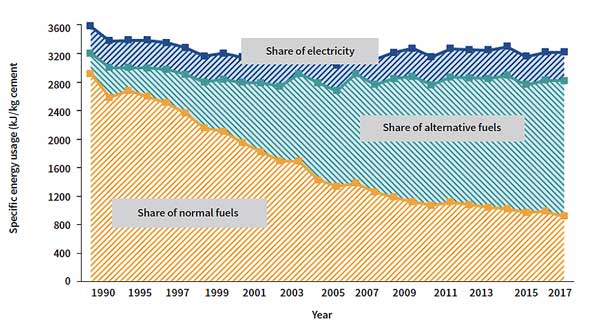Boosting AF rates with flame thermography
Over the past 30 years the cement industry has witnessed an increasing use of alternative fuels (AF), but the amount that can be fired in the main burner is limited by different process factors. To optimise AF firing in the main burner, VDZ has conducted several research projects with the aid of flame thermography. The know-how gained has been used to support producers seeking higher AF substitution rates, including a European plant that reached 100 per cent in the main burner without compromising clinker quality. By Marco Lindemann Lino and Albrecht Schall, VDZ, Germany.

Figure 1: energy share of AF in Germany, 1990-20171
In recent decades, the cement industry has come to recognise the importance of alternative fuel (AF) firing. In the case of Germany, a leader in this technology, the evidence of considerable economic and environmental benefits has boosted the country’s thermal substitution rate (TSR) to an average of around 68 per cent in 2018, with some plants reaching over 90 per cent. Energywise the share of AF in cement-specific energy consumption has grown from a mere 282kJ/kg of cement in the 1990s to a remarkable 1901kJ/kg of cement in 2018 (see Figure 1). On a global scale the average AF substitution rate was around 17 per cent in 20162 and is expected to rise steadily.

